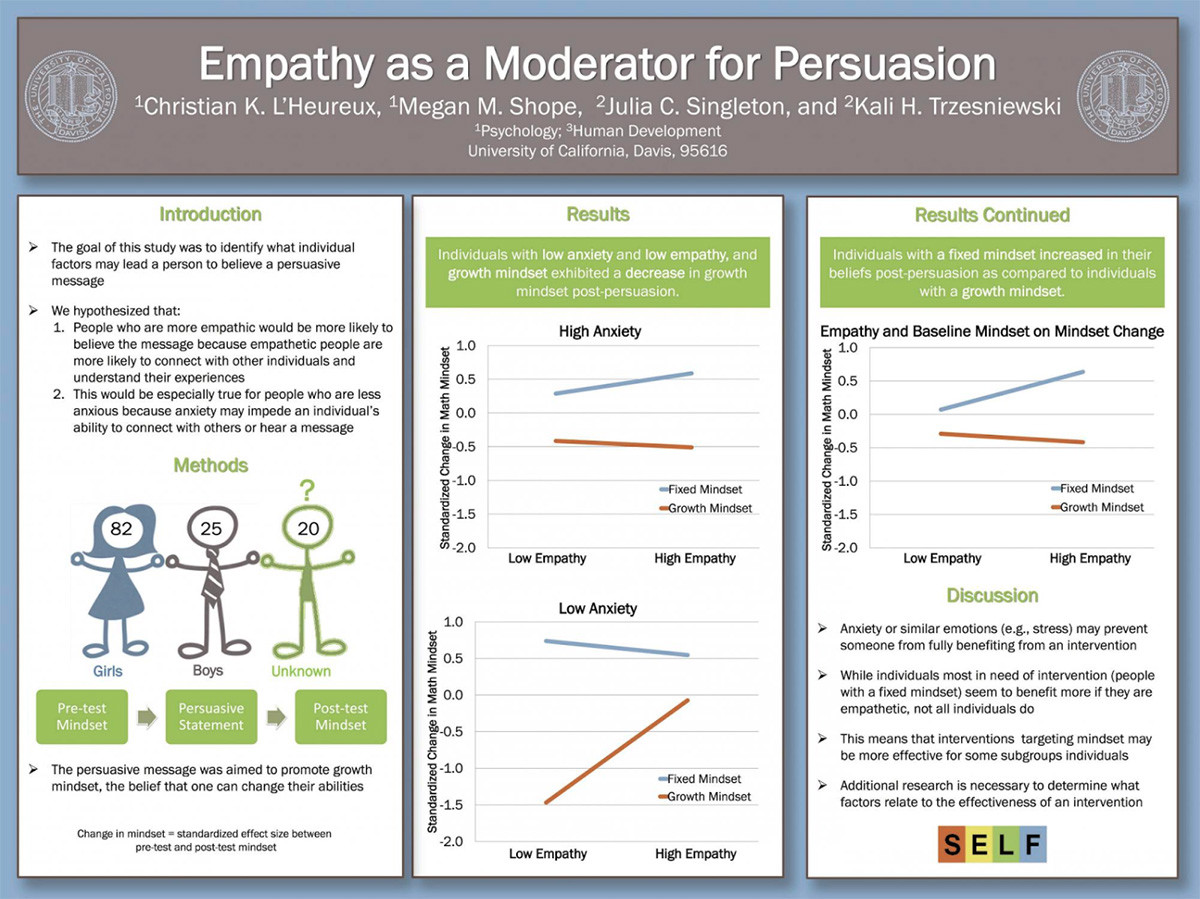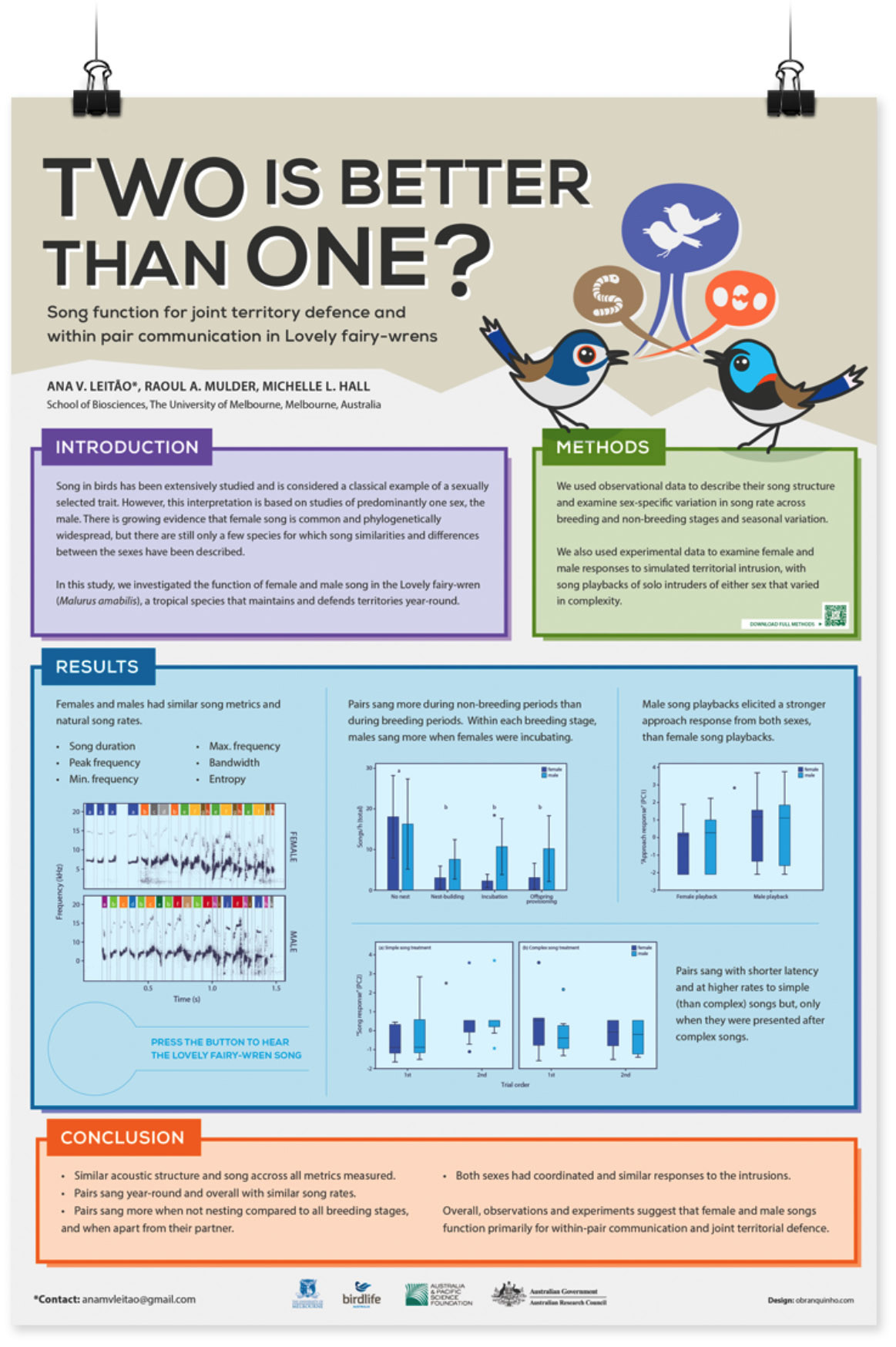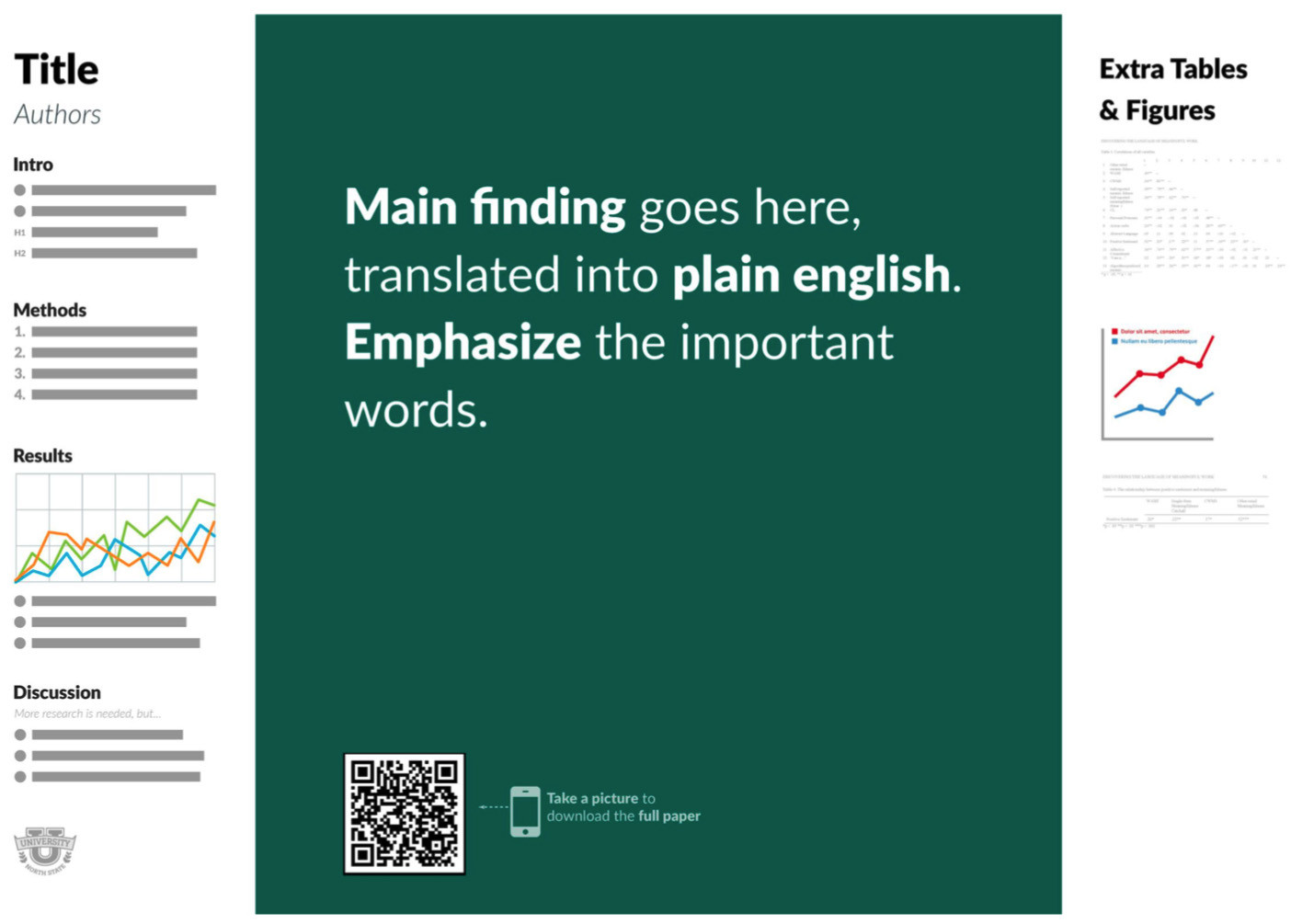What is a Poster Session? Definition, Guide & Examples
What is a Poster Session?
Poster sessions are an integral (and fun!) part of academic conferences or annual meetings, and an important opportunity for researchers at all career stages to present and discuss their work with other researchers in their field.
Poster sessions typically take place in a large room where poster boards are set up and numbered and each presenter can hang a poster illustrating their methods and results. You can also have virtual poster sessions where posters are presented using a virtual conference platform.
Preparing a good poster takes some time and work, but it is well worth the effort in order to give your research a chance to shine!
How do poster sessions work?
During the poster session, conference attendees can wander around the poster hall to browse the posters. The presenters are expected to stay by their poster for the duration of the session so that other participants can come and listen to them talk about their work and ask them questions.
How long is the poster session?
A poster session usually lasts 1-2 hours, but can be longer or shorter depending on the size of the conference. Sometimes poster sessions are scheduled during a cocktail hour, which can actually be helpful to provide a bit of “Dutch courage” and facilitate more casual discussions.
What are the benefits of a poster session?
Presenting your research at a poster session is a great opportunity, especially for early-career researchers who are less likely to be invited to give a longer oral presentation at a big conference. These sessions are the best place to show off your impressive research results and for networking as well. You may even end up meeting a future employer and being offered your next job!
Need to organize a virtual poster session?
Guide to Your First Poster Session
1. Read the Guidelines
The first step in any submission process is always to carefully read the instructions. Conferences may have different guidelines and formatting requirements, and it is very important that you follow them. If you don’t, your submission may be automatically rejected.
Pay particular attention to word counts during the submission process, and size/formatting requirements of the poster itself (imagine showing up with a poster that doesn’t fit on the board), as well as the length of the poster session.
For a longer poster session, you should prepare a 5 minute oral summary of your work, while for a shorter session you should probably cut that down to 1 or 2 minutes so that you don’t take up too much of anyone’s time. If someone visiting your poster is interested in hearing more, they will ask you questions.
Most conferences will require your abstract to include sections describing the methods, results, and discussion, while others may be more flexible and allow posters that describe methods that are still in development or studies that are planned for the future. Make sure that you know what is expected of you so that you have the best chance of having your abstract accepted and winning a coveted poster prize.
2. Write Your Abstract
Next, you will need to write an abstract that summarizes your work in a few hundred words. To do this you will need to choose what portion of your research project you want to present.
While it may be tempting to try to impress by explaining everything, it is unrealistic to try to present all of your work in so few words. Set yourself up for success by picking one study or experiment that tells a short, cohesive, and interesting story.
Your abstract should first describe the background and rationale behind your work, and then summarize the methodology used, the main results and conclusions, and then briefly discuss the implications and relevance of your findings.
You will also need to come up with a good title for your abstract. Remember that your abstract will be published in an abstract booklet that all attendees of the conference will use to find specific posters and presenters during the conference. Having a catchy title and a well-written abstract will help increase interest in your work and ensure that plenty of people will visit your poster during the poster session.
For most large conferences, submitted abstracts are peer-reviewed before you are invited to present your poster. Once you receive confirmation that your abstract has been accepted, then you can start preparing your poster.
Check out this article for more detailed instructions on how to write a good abstract for a conference.
3. Create Your Poster
Once your abstract has been accepted for a conference presentation, you will need to start preparing your poster design using a program such as Powerpoint, Photoshop, or Adobe Illustrator.
Your poster should be well-organized, with each section following clearly from the previous one, creating a visual path that tells a coherent story and ensuring readability. Someone who is looking at your poster should not have to jump from one side of the poster to the other in order to understand your work. Use color to group text, graphs, and images that belong together and numbers or arrows to indicate what comes next.
Like the abstract, your poster should have sections summarizing the background and rationale, methodology, results, and the implications of your work. This time, however, the story should be told mainly through figures rather than through text.
A little bit of text goes a long way on a poster - in fact, the fewer words the better. Posters with less text are more inviting and will draw more people. Don’t forget that you will be there to explain your work, so there is no reason to try to include everything in the text. You can even shorten your text by summarizing sections with bullet points and highlight the key messages.
Your poster should also include your contact information as well as the logos of the institution you work for and any organizations that funded your work. Some universities and research centers provide poster templates that use a specific color scheme and already include necessary logos. Check whether your institution has such a template and use it if they do - it will save you a lot of time!
Once you have finished creating your poster, you will need to get it printed. Again, it is very important that you read the instructions and conference guidelines very carefully and print your poster in the correct size and orientation.
Some institutions have dedicated printing facilities, but you can also visit a copy shop that has a large-format printer. If you are feeling creative, you might even choose to be a little bit different and print your poster on fabric so that you can reuse it as a unique table cloth or picnic blanket in the future. I have even seen fabric posters that use a special template that can be cut and sewn into a t-shirt! Unique posters tend to draw a lot of attention at conferences.
4. Prepare for the Session
Once you have created your poster, it’s time to prepare to present it! Poster sessions are much less formal than conference talks or lectures, so no need to stress about giving a perfectly practiced speech. Go into the poster session with the aim of having fruitful conversations with your fellow researchers.
You should be able to summarize your work in just a couple of minutes for anyone who visits your poster and then be prepared to answer any follow-up questions. Try to keep your summary short, since most attendees would like to visit several posters during the session and may be too polite to walk away if you keep them too long. You will have more interesting discussions if you allow visitors to ask you to elaborate on the parts of your research that they find most interesting.
Presenting your research can be stressful, especially the first time, but remember that no one knows your work better than yourself.
All of these tips are relevant to both in-person as well as virtual poster sessions, and you can find more detailed presenting tips here.
Poster Presentation Examples
Below you will find a few examples of posters with different formats.
Example 1
This poster follows a typical scientific poster format. It has large figures, uses bullet points to minimize the amount of text, and uses a unified colour scheme. The simple layout makes it easy for the viewer to follow.
Source: UC Davis academic posters

Source: UC Davis academic posters - https://urc.ucdavis.edu/photo-galleries/uc-davis-academic-posters
Example 2
This poster also follows the standard academic poster format, but it uses graphic design elements to add some flair and make it stand out from the rest. Adding color and custom graphics is a great way to draw attention to your poster without taking anything away from the quality of the work that it illustrates.
Source: Osvaldo Branquinho on Behance

Source: Osvaldo Branquinho on Behance - https://www.behance.net/gallery/2284120/Scientific-Poster
Example 3
If you are a social media user, you may have heard of the Better Poster campaign. This movement was started by a PhD candidate in Michigan in 2019 to try to transform the traditional poster into something more modern and efficient. The new format emphasizes just a few key points and adds a mobile-readable QR code that links to associated publications. While it may look strange if you are used to seeing traditional posters, this new format has become quite popular and it is now not unusual to see it at conferences. You can also watch the campaign video explaining the rationale behind this format - it’s actually quite interesting!
Source: Inside Higher Ed

Source: Inside Higher Ed - https://www.insidehighered.com/news/2019/06/24/theres-movement-better-scientific-posters-are-they-really-better
Conclusion
These are some guidelines and ideas that will hopefully help you to create an attractive poster and have a successful poster session. While there are some general rules, poster sessions are also an opportunity to get creative (while still adhering to the conference guidelines of course) in order to draw more attention to your poster, generate interest and excitement in your research, and ensure lots of fruitful discussions!


